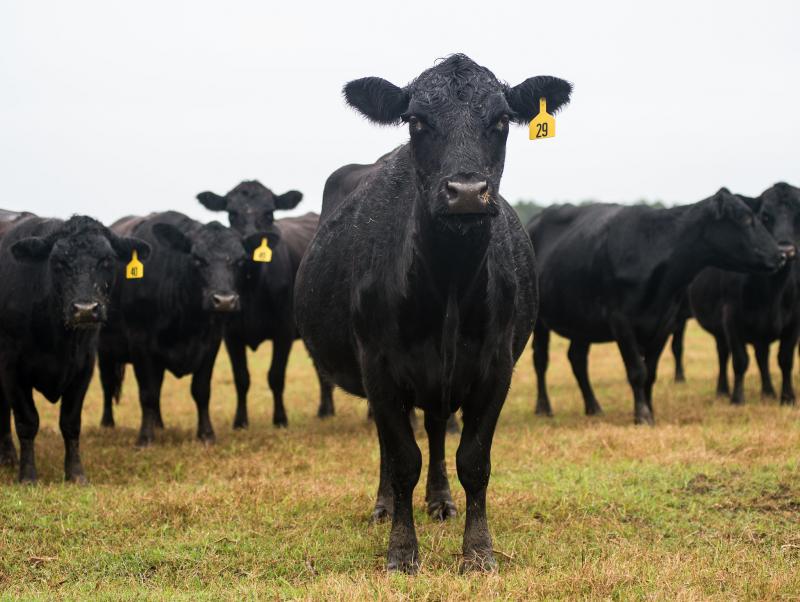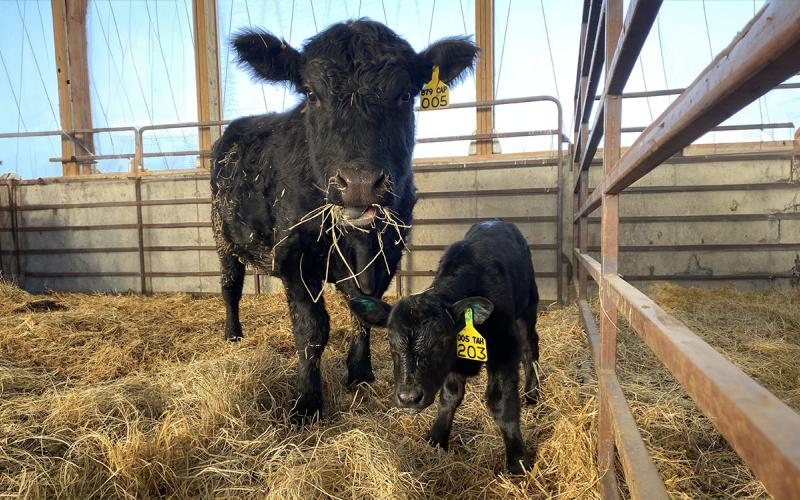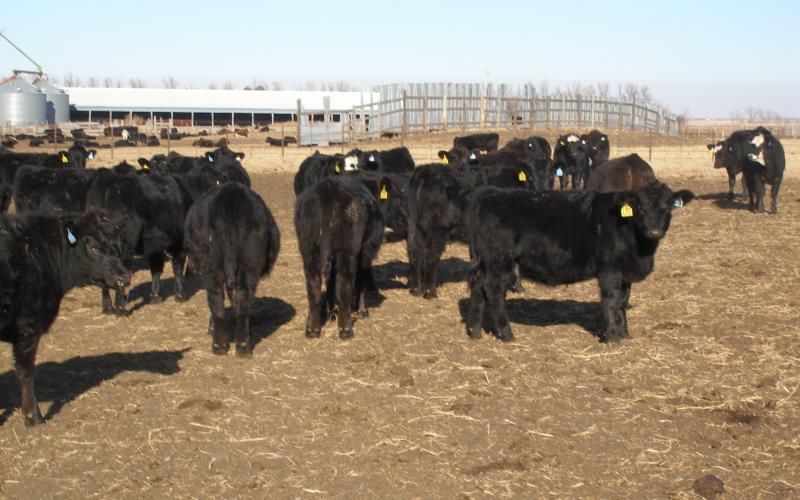
Calving is just wrapping up for most producers, but it is hard to think about next year’s calf crop. However, with the 2021 Artificial Insemination (AI) beef sire directories available, it is time to think about breeding season, especially if you will be using synchronization. Depending on which protocol is selected, it could be over 35 days from the start of the program to artificial insemination. As a result, the need to purchase Controlled Internal Drug Releases (CIDRs) or Melengestrol Acetate (MGA) needs to be on the top of the to-do list.
The Beef Reproduction Task Force, composed of AI and pharmaceutical company representatives, veterinarians and university reproductive specialist have developed a list of synchronization protocols recommended for heifers for both conventional semen and sexed, based on research data and field use. The recommended protocols can be found in genetic company catalogs and the Beef Reproduction Task Force website. To help compare synchronization protocols and to develop synchronization and breeding calendars, consider using the free Estrus Synchronization Planner.
Heifer Estrous Synchronization Protocols for Conventional Semen
The recommended heifer estrous synchronization protocols for conventional semen have been put into one of three categories: 1) Heat Detection Protocol; 2) Heat Detection and Timed AI Protocol and 3) Fixed-Time AI Protocol.
Heat Detection Protocols
Heifers in these protocols should be inseminated 12 hours after the first observation of standing heat. Peak heat activity occurs approximately 48 to 72 hours after prostaglandin (PG). In order to optimize AI pregnancy rates, heat detection should occur at minimum three times per day for at least one hour per check. This equates to a total of three hours per day heat checking with five to six hours of heat check increasing overall AI pregnancy rates. It is also important to train individuals to detect signs of heat (Table 1) and application of a heat detection aid will help assist in determining heifers in heat when no one is watching. The heat detection protocols for heifers include:
- One-Shot PG
- Seven-Day CIDR®-PG
- MGA®-PG
| Before Standing Heat (6-10 Hours before) |
During Standing Heat (can last 6 – 24 hours) |
After Standing Heat (up to 10 hours) |
| Will not stand to be ridden | Stands to be ridden | Will not stand to be ridden |
| Vocal and smells other cows | Nervous and restless | Clear mucous discharge |
| Nervous and restless | Congregates and rides other cows |
|
| Attempts to ride other cows | Vulva moist, red and slightly swollen |
|
| Vulva moist, red and slightly swollen | Clear mucous discharge |
|
Heat Detect and Time AI (TAI) Protocols
These protocols include a combination of both heat detection and timed insemination. Heifers observed in heat should be inseminated 12 hours after standing heat. After approximately three days of heat detection, all heifers not showing heat after PG injection will be given an injection of gonadotropin-releasing hormone (GnRH) and inseminated (i.e. timed insemination). The amount of time spent on heat detection is reduced and early responders have a better chance of conceiving compared to a single fixed-time AI. The Heat Detect and Timed AI protocols include:
- Select Synch + CIDR® & TAI
- MGA® - PG & TAI
- 14 – day CIDR® - PG & TAI
Fixed-Timed AI (TAI) Protocols
In a fixed-time AI protocol, all heifers are inseminated at a pre-determined time with no heat detection required. These protocols are typically more intensive and expensive, but no time is dedicated to heat detection. However, expect a lower conception rate compared to the previous protocols. When considering these fixed-time AI protocols, only synchronize the number of heifers that can be inseminated in a four-hour period (protocol dependent). Fixed-Time AI protocols include:
- Short Term Protocols
- Seven-day CO-Synch + CIDR®
- 5-day CO-Synch + CIDR®
- Long Term Protocols
- 14-day CIDR® - PG
- MGA® - PG
Heifer Estrous Synchronization Protocols for Sexed Semen
A straw of sexed semen (gender selected) may have two-to-four million sperm cells compared to 20-to-40 million in a conventional straw that includes both male and female sperm cells. Due to lower number of sperm cells per straw and other negative influences, different protocols were developed to improve conception rates to sexed semen.
The recommended heifer estrous synchronization protocols for sexed semen have been put into one of three categories: 1) Heat Detection Protocol, 2) Fixed Time AI Protocol and 3) Split-Time AI.
Heat Detection
All heat detection protocols listed for conventional semen are acceptable to use with sexed semen. Estrous detection aids are highly encouraged. Note that heifers are artificially inseminated 16 to 22 hours after the first observation of standing heat with sexed semen compared to 12 hours with conventional semen.
Timed AI
To optimize pregnancy rate, it is recommended to use estrous detection aids and only use sexed semen on heifers that have activated heat detection aids and the heifers not in heat bred to conventional semen.
- Seven-day CO-Synch + CIDR®
- PG-7 Seven-day CO-Synch + CIDR®
Split-Time AI (STAI)
Go to the Beef Reproduction Task Force website to review the split-time AI protocol. Additional time is required, however, number of heifers detected in heat and bred at the optimal time will be the result, hopefully increasing conception rate.
- 14-day CIDR®-PG & STAI
Handling and Administering Synchronization Hormones
When handling all hormones, including the CIDR®, wear latex or non-latex gloves, regardless if you are a man or a woman. Prostaglandin is a smooth muscle contractor; our intestines are the largest smooth muscle in the human body. If prostaglandin is absorbed through the skin, it can “tie up” the digestive system. Additionally, the hormone functions in the human body like it does in a heifer or cow, therefore, extreme care should be taken when handling all synchronization hormones.
Follow the protocol, give the proper hormone injection or insert at the right time and don’t expect to jump start all heifers that are not cycling. When administering injectable hormones, follow Beef Quality Assurance guidelines.
The adage more is always better does not work with melengestrol acetate (MGA). First, it is illegal to use MGA off label. Secondly, MGA is absorbed in the fat and will take longer to clear from the heifer’s system when fed at a rate higher than 0.5 mg per head per day, creating problems with estrus (heat) responses and subsequent timing of prostaglandin injection.
The addition of a progestin, such as CIDR®, in the protocol can help jump-start some of the non-cycling heifers. However, caution needs to be taken. CIDR® or MGA® are not the “cure all” for under-developed, non-cycling heifers. An evaluation of the nutrition program is recommended if a high percentage of heifers are not cycling.
For more information related to estrous synchronization contact Robin Salverson, Olivia Amundson or Kiernan Brandt.


